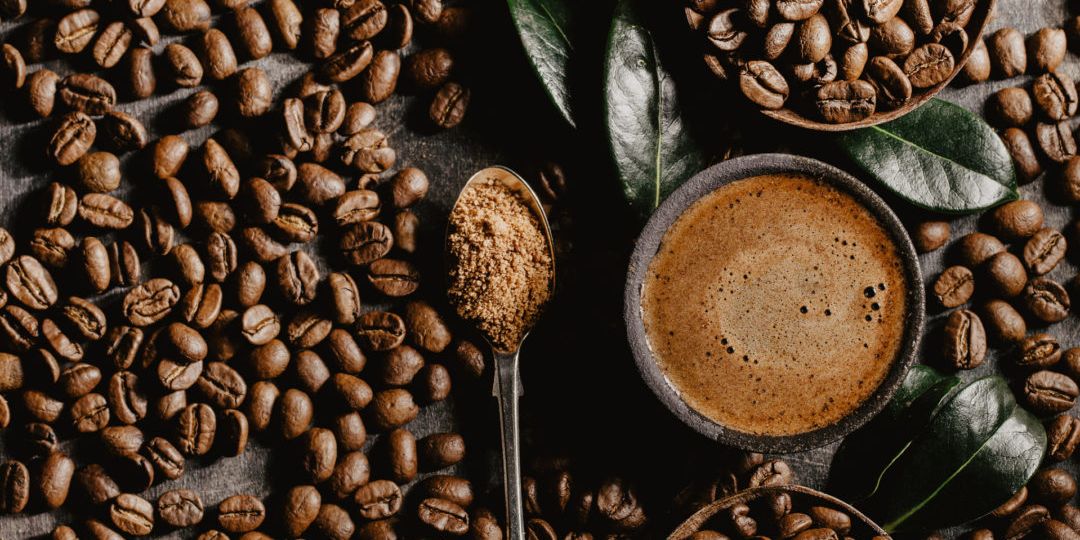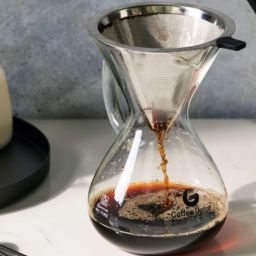
Dark roast coffee, known for its bold and rich flavor, is a favorite among many coffee enthusiasts. Its deep, dark color and oily surface hint at a complex taste profile that often features notes of chocolate and smokiness. Dark roast coffees are produced by roasting coffee beans at a higher temperature for a longer period compared to lighter roasts.
This method not only darkens the beans but also significantly impacts the flavor, making it a central point of discussion among coffee lovers. The question arises: Is dark roast coffee more bitter?
Is Dark Roast Coffee More Bitter?
Yes, dark roast coffee is generally perceived to be more bitter than its lighter counterparts. The reason lies in the roasting process. As coffee beans are roasted longer, the sugars within them break down, and more bitter compounds are formed. This transformation results in a coffee that, while less acidic, carries a pronounced bitterness that is cherished by some but may be overpowering for others.
Key Takeaways
- Impact of Roasting Duration and Temperature on Bitterness: The longer and hotter the coffee beans are roasted, the more pronounced the bitterness in the final brew. This is due to the degradation of complex sugars into simpler, more bitter compounds.
- Differences in Bitterness Among Various Coffee Roasts: Not all dark roasts are the same. The degree of roasting can vary, which means the level of bitterness can also vary. Understanding the specific roast level can help you choose a coffee that fits your taste preference.
- Tips on Reducing Bitterness in Dark Roast Coffee: If you find dark roast too bitter, there are ways to adjust the brewing process to soften the bitter notes. Using a slightly coarser grind, decreasing the brewing time, or adjusting the water temperature can help reduce bitterness, enhancing the other flavors present in the coffee.
Understanding Coffee Roasting and Bitterness
Coffee roasting is a craft that significantly influences the flavor profile of your morning brew, especially when it comes to bitterness. As coffee beans roast, they undergo a series of chemical reactions that transform their flavors. The darker the roast, the more these flavors evolve towards a bitter profile.
The Roasting Process
The roasting process is where the magic happens. It starts with green coffee beans, which are relatively soft and have a grassy smell. As they roast, they lose moisture and expand, undergoing the Maillard reaction—a chemical reaction between amino acids and reducing sugars that gives browned food its distinctive flavor.
This reaction contributes to the complex flavor profile of coffee, but as the roast becomes darker, the sugars in coffee beans continue to break down into simpler compounds that are significantly more bitter.
Chemistry Behind Bitterness
One of the key components in coffee that contributes to its bitterness is trigonelline, a bitter alkaloid that breaks down during roasting. As the beans are exposed to heat, trigonelline degrades into nicotinic acid (niacin or Vitamin B3) and other compounds that can increase the bitterness of the coffee.
Additionally, the longer roasting times decrease the acidic qualities that typically balance coffee’s natural bitterness, resulting in a brew that leans more towards bitter flavors.
Comparison of Different Roasts
Coffee comes in a spectrum of roasts, each offering distinct flavors, aromas, and mouthfeels that cater to diverse palates. Understanding these differences can help you choose the right coffee for your taste.
Light Roasts
Light roast coffee is often lighter in color and has no oil on the bean surfaces. These coffees typically have a higher acidity and retain most of the original coffee’s flavors, which can range from fruity to floral depending on the bean’s origin. The light roast preserves many of the unique characteristics of the coffee, resulting in a complex and nuanced flavor profile.
Medium Roasts
Medium roasts strike a balance between preserving the unique characteristics of the coffee bean and introducing deeper, roasted flavors. The beans have a richer brown color and may have a light sheen of oil. They offer a more balanced flavor profile with reduced acidity but more body than light roasts, featuring flavors that can be described as chocolaty, nutty, or spicy.
Dark Roasts
Dark roasts have a dark brown or sometimes almost black color, with a shiny oil surface. These beans have been roasted long enough to produce a pronounced bitterness and a decrease in acidity, emphasizing smoky, caramelized flavors. The mouthfeel is generally fuller, which can be appealing for those who enjoy a robust cup of coffee. However, the original flavors of the beans are often overshadowed by the flavors from the roasting process.
Factors Influencing Bitterness in Dark Roast Coffee
The bitterness in dark roast coffee can be influenced by several factors, from the type of bean to how it’s brewed.
Bean Variety and Origin: The variety and origin of the beans play a crucial role in the overall taste of your coffee. Robusta beans, for instance, are naturally more bitter and often have a higher caffeine content than Arabica beans. The growing conditions and soil composition also affect the acidity and flavor profile of the coffee, which can influence perceived bitterness.
Bean Quality: Higher quality beans tend to have a more balanced and pleasant flavor profile, even when dark roasted. Poor quality beans, however, might taste overly bitter and lack complexity because they do not have the inherent flavors that high-quality beans do.
Brewing Methods and Grind Size: How you brew your coffee significantly affects its taste. A finer grind can lead to over-extraction, enhancing bitterness, especially in dark roasts. Conversely, a coarser grind might under-extract, leading to a weak and watery taste. Experimenting with brewing methods and adjusting grind size can help you achieve a more balanced flavor, reducing unwanted bitterness and enhancing the enjoyable attributes of the coffee.
How to Make Dark Roast Coffee Less Bitter
Reducing the bitterness of dark roast coffee while enhancing its other flavors is achievable with a few adjustments to your brewing technique.
Consider using a French press or an Aeropress, which allow for better control over brewing time and temperature, two critical factors in extracting the best flavors from dark roast beans. These methods help avoid over-extraction, a common cause of bitterness.
The ratio of coffee to water can greatly influence the taste of your brew. A general guideline for dark roasts is to use a ratio of about 1:16 (one part coffee to sixteen parts water). Adjusting this ratio slightly can decrease bitterness and bring out more desirable flavors. For grind size, a medium to coarse grind works best for most brewing methods, reducing surface area exposure and thus bitterness.
FAQs
Does Dark Roast Coffee Have More Caffeine?
No, dark roast coffee actually tends to have slightly less caffeine than lighter roasts. This is due to the extended roasting process, which degrades some of the caffeine.
How Do I Choose the Right Dark Roast?
When selecting a dark roast, look for beans that are shiny with oil but not overly blackened. Choose reputable brands that source high-quality beans, as this can make a significant difference in avoiding overly bitter flavors.
Final Thoughts
In conclusion, while dark roast coffee is inherently more bitter due to its roasting process, there are several ways to mitigate this bitterness. By adjusting brewing methods, optimizing grind size, and tweaking the coffee to water ratios, you can enhance the richer, more complex flavors inherent in dark roast beans.









